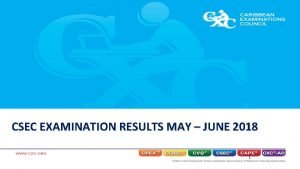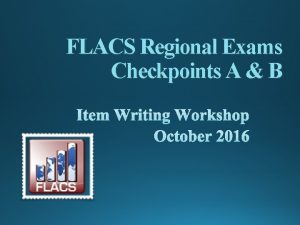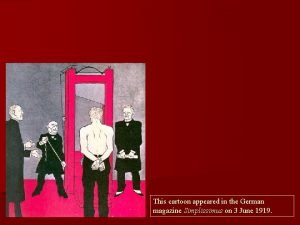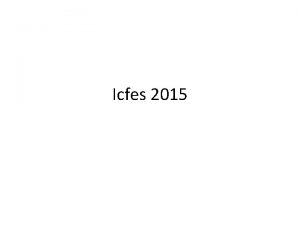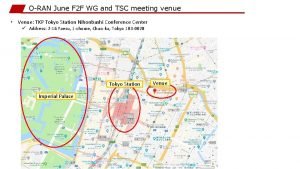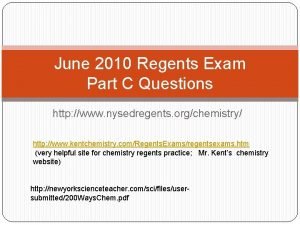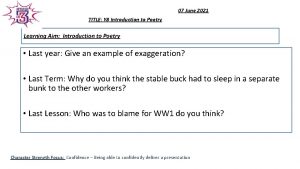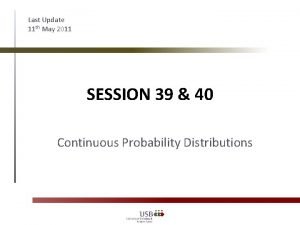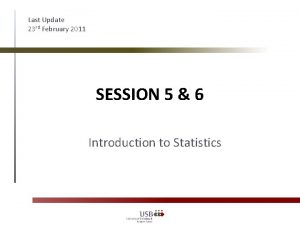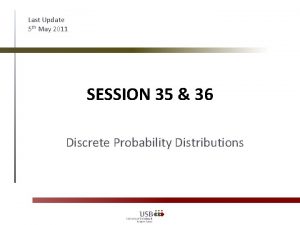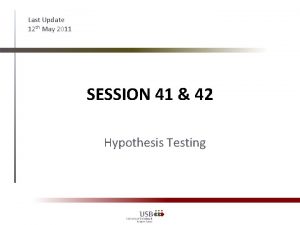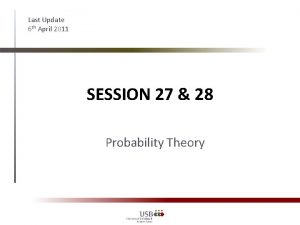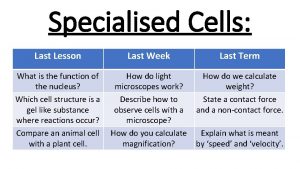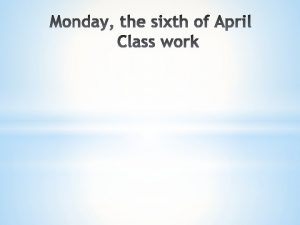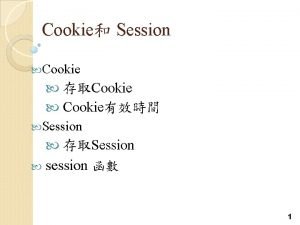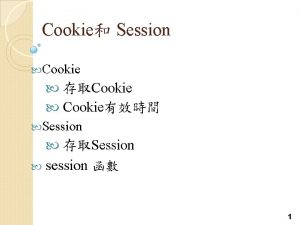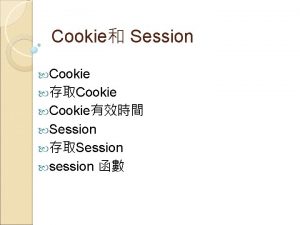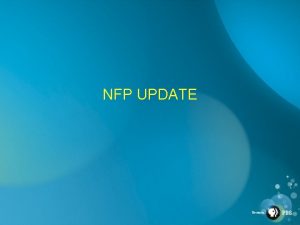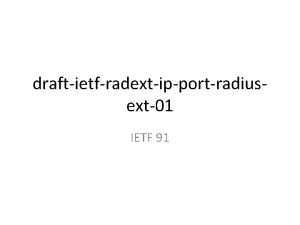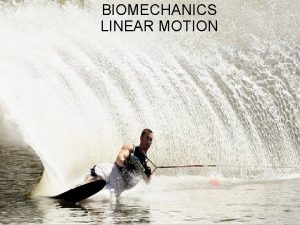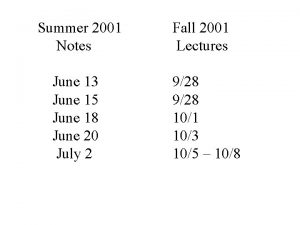Last Update 17 th June 2011 SESSION 49























- Slides: 23

Last Update 17 th June 2011 SESSION 49 - 52 Regression

Lecturer: University: Domain: Florian Boehlandt University of Stellenbosch Business School http: //www. hedge-fundanalysis. net/pages/vega. php

Learning Objectives 1. 2. 3. 4. 5. XY-Scatter Diagrams Plotting the Regression Line Coefficient Estimates Pearson Coefficient of Correlation Spearman Rank Correlation Coefficient

XY-Scatter Diagram To draw a scatter diagram we need data for two variables. In applications where one variable depends to some degree on the other variable, the dependent variable is labeled Y and the other, called the independent variable, X. The values for X and Y are combined into a single data point using the observations for X and Y as coordinates.

Example Temperature - Truck XY-Scatter Trucks: y Obs 1 2 3 4 5 6 7 8 9 10 Temp Trucks x y 11 2. 5 14 6. 5 20 8. 5 21 10. 5 23 11 24 12 26 13 28 13. 5 30 15. 5 34 19 20 18 16 14 12 10 8 6 4 2 0 0 5 10 15 20 Temp: x 25 30 35 40

Regression Analysis Regression analysis is used to predict the value of one variable on the basis of the other variables. The first-order linear model describes the relationship between the dependent variable Y and the independent variable(s) X. The regression model with a as the y-intercept and m as the slope coefficient is of the form:

Example Temperature - Truck XY-Scatter Trucks: y Obs 1 2 3 4 5 6 7 8 9 10 Temp Trucks x y 11 2. 5 14 6. 5 20 8. 5 21 10. 5 23 11 24 12 26 13 28 13. 5 30 15. 5 34 19 The estimators of the intercept a and slope coefficient b are based on drawing a straight line through the sample data: 20 18 16 14 12 10 8 6 4 2 0 0 5 10 15 20 Temp: x 25 30 35 40

Intercept and Slope The intercept a is the y-coordinate of the point where the linear function intersects the y-axis. The slope coefficient b is defined as the change in y for a unit change in x.

Fitted Line With Residuals The line drawn through the point is called the regression line.

Residuals Squared The regression or least square line represents a line that minimizes the sum of the squared differences between the points and the line.

Calculating Coefficients Raw Data (y-variable as dependent and x as independent variable): Obs 1 2 3 4 5 6 7 8 9 10 Temp Trucks x y 11 2. 5 14 6. 5 20 8. 5 21 10. 5 23 11 24 12 26 13 28 13. 5 30 15. 5 34 19

Solution Obs 1 2 3 4 5 6 7 8 9 10 Total Temp Trucks x y xy x^2 11 2. 5 27. 5 121 14 6. 5 91 196 20 8. 5 170 400 21 10. 5 220. 5 441 23 11 253 529 24 12 288 576 26 13 338 676 28 13. 5 378 784 30 15. 5 465 900 34 19 646 1156 231 112 2877 5779 Step 1: Calculate the gradient (beta):

Solution Obs 1 2 3 4 5 6 7 8 9 10 Total Temp Trucks x y xy x^2 11 2. 5 27. 5 121 14 6. 5 91 196 20 8. 5 170 400 21 10. 5 220. 5 441 23 11 253 529 24 12 288 576 26 13 338 676 28 13. 5 378 784 30 15. 5 465 900 34 19 646 1156 231 112 2877 5779 Step 2: Calculate the intercept (alpha):

Interpreting the Coefficients The slope coefficient b may be interpreted as the change in the dependent variable y for a one unit change in x. In the previous example, a one unit change in temperature results in a b = 0. 654 additional truckloads of cool drinks sold. The intercept a is the point at which the regression line and the y -axis intersect. If x = 0 lies far outside the range of sample values x, the interpretation of the intercept is not straight-forward. In the temperature-truck example, x = 0 lies outside the smallest and largest values for x in the sample. Interpreting the intercept for x would imply that at temperature of x = 0, the soft-drink sales decline to negative 3. 914!

Point Prediction Upon obtaining the coefficient estimates we can predict the outcome for various x (point prediction) between the minimum and maximum sample observation using the regression function y = a + mx. For example: x = 16 degrees? y = 3. 914 + 0. 654*16 y = 6. 554 ≈ 7 truckloads X = 32 degrees? y = 3. 914 + 0. 654*32 y = 17. 023 ≈ 17 truckloads

Pearson Coefficient of Correlation The Pearson coefficient of correlation R may be used to test for linear association between variables. The coefficient is useful to determine whether or not a linear relationship exists between y and x. Note that variables may be positively or negatively correlated. R = 1 denotes perfect positive correlation, R = -1 signifies perfect negative correlation. R is defined for:

Type of Relationship DIRECT LINEAR RELATIONSHIP Small Dispersion Wide Dispersion INVERSE LINEAR RELATIONSHIP Small Dispersion Wide Dispersion NO LINEAR RELATIONSHIP Positive Linear Correlation exists Negative Linear Correlation exists No Correlation 0 < r <+ 1 -1 < r < 0 r=0

Coefficient of Determination Squaring the Pearson coefficient of correlation delivers the coefficient of determination R 2 in regression. It may be interpreted as the proportion of variation in the dependent variable y that is explained by the variation in the explanatory variable x. R 2 is a measure of strength of the linear relationship between y and x.

Solution Obs 1 2 3 4 5 6 7 8 9 10 Total Temp Trucks x y xy x^2 y^2 11 2. 5 27. 5 121 6. 25 14 6. 5 91 196 42. 25 20 8. 5 170 400 72. 25 21 10. 5 220. 5 441 110. 25 23 11 253 529 121 24 12 288 576 144 26 13 338 676 169 28 13. 5 378 784 182. 25 30 15. 5 465 900 240. 25 34 19 646 1156 361 231 112 2877 5779 1448. 5 Step 3: Calculate R and R 2

Spearman Rank Correlation The standard coefficient of correlation allows for determining whethere is evidence of a linear relationship between two interval variables. In case where the variables are ordinal, or, if both variables are interval, the normality requirement may not be satisfied. A nonparametric test statistic called Spearman Rank Correlation Coefficient may be used under the circumstances.

Objective: Comparing 2 Variables Analyzing the relationship between two variables Data type? Nominal Ordinal Nominal Spearman Rank Correlation Chi-Square test of a contingency table Population Distribution? Error is normal or x and y bivariate normal Simple linear regression x and y not bivariate normal

Example Below there is a list of organizational strengths that were independently ranked by management and staff and the managing director wished to know how closely correlated were the assessments: Ranking Manag Business Aspect ement Staff Brand Equity 1 1 Financial Controls 2 3 Customer Service 3 2 Planning Systems 4 6 Research & Development 5 4 Company Morale 6 7 Productivity 7 5

Calculating RS Ranking Manage Business Aspect Obs ment Staff Brand Equity 1 1 Financial Controls 2 2 Customer Service 3 3 Planning Systems 4 4 Research & Development 5 5 Company Morale 6 6 Productivity 7 7 Total d 1 3 2 6 4 7 5 d^2 0 -1 1 -2 1 -1 2 0 1 1 4 12
 What is an alternative of log based recovery
What is an alternative of log based recovery Cxc results 2018 may/june date
Cxc results 2018 may/june date Head start of greater dallas
Head start of greater dallas Confined placental mosaicism
Confined placental mosaicism June 23
June 23 Flacs checkpoint b spanish exam
Flacs checkpoint b spanish exam Childhood memory of rizal
Childhood memory of rizal Lottery in june corn heavy soon meaning
Lottery in june corn heavy soon meaning A cartoon that appeared in a british newspaper in 1919
A cartoon that appeared in a british newspaper in 1919 Ward 34 ninewells
Ward 34 ninewells Foreshadowing in the lottery
Foreshadowing in the lottery Holy june
Holy june June 15 1215
June 15 1215 Grade 7 life orientation test
Grade 7 life orientation test Elephant riding in phuket texto en español
Elephant riding in phuket texto en español January 2006 chemistry regents answers
January 2006 chemistry regents answers June 2005 calendar
June 2005 calendar Britney spears educational background
Britney spears educational background Dr june james
Dr june james June f
June f January march april may june july
January march april may june july June 22 to july 22
June 22 to july 22 June 2010 chemistry regents answers
June 2010 chemistry regents answers Summary period: june 2021 poem
Summary period: june 2021 poem

